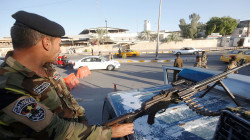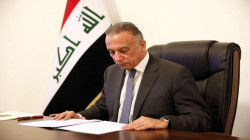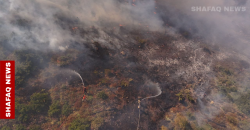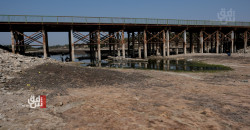Hawizeh Marsh faces catastrophic fish die-off as water levels plummet, forcing locals to flee

Shafaq News/ In southern Iraq's Maysan governorate, the Hawizeh Marsh (Haur Al-Hawizeh) is experiencing an environmental catastrophe of devastating proportions. A staggering 95% of the fish population has died due to drastically reduced water levels. As this crisis deepens, there are growing fears that the once-thriving marsh's aquatic life could be lost forever, and local communities, whose livelihoods depend on the marsh, may be forced to abandon their homes.
The marsh, located to the east of the Tigris River, straddling the Iran-Iraq border, has become a grim symbol of Iraq's severe water crisis. For years, Iraq has struggled with water shortages that have now reached a critical point, threatening not just agriculture but even the availability of drinking water. Despite heavy rains last year, water scarcity persists, and experts say Iraq has failed to harvest rainwater effectively or implement strategic projects to manage it.
Thaer Mokheef, a member of the Parliamentary Committee on Agriculture, Water, and Marshes, highlighted that Maysan is "one of the Governorates hardest hit by the water shortage." explaining that many residents rely on the marshes for fishing and bird hunting. The diminishing water levels are having a direct, devastating impact on their lives.
The marshes, he noted, rely on rivers flowing from Iran. "There are 42 streams that feed the marshes, some year-round and others seasonally. These streams have been entirely cut off due to the diversion of rivers and the construction of dams by Iran," Mokheef told Shafaq News.
The result has been catastrophic for the Khair area in Maysan, where the canals branching from the Khair River have dried up. Fish in the Hawizeh Marsh, especially in the Dub area, have been dying en masse due to a severe water shortage, low dissolved oxygen levels, and soaring temperatures.
The situation, described by Majid Juma al-Saadi, Director of Agriculture in Maysan, is dire. "The initial measures to control the situation by releasing one cubic meter of water per second were not enough, and the fish deaths continue," he said.
"After analyzing water and fish samples, the primary cause of the die-offs was identified as critically low water levels and oxygen depletion. The loss includes hundreds of tons of fish, notably Carp, which were part of a government project to stabilize the marsh communities."
Maysan and Basra governorates are allocated 185 cubic meters of water per second daily, with the marshes receiving just three cubic meters per second. However, according to Al-Saadi, the actual supply has been far below this allocation, and without immediate intervention, the fish deaths will only escalate.
In turn, environmental expert Ahmed Saleh described the ongoing disaster, noting that millions of fish across various species have died. The government has called for increased water releases, but the damage has already been extensive. "The losses in fish resources are incalculable," Saleh said, adding that 95% of the fish in the marsh have perished, and the situation remains critical.
Moreover, the human toll of this environmental disaster is equally concerning. Fishermen, now out of work, face the grim prospect of abandoning their traditional livelihoods. In desperation, they may migrate to urban centers, taking up jobs that are unsuitable and unfamiliar, such as construction work or service jobs in restaurants. This shift could lead to significant psychological and economic distress, further exacerbating the tragedy unfolding in the Hawizeh Marsh.





